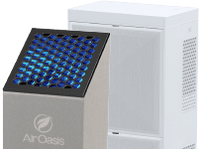A Child's Guide to the Human Respiratory System
Every part of your body needs oxygen. The respiratory system is the part of your body that’s in charge of taking in oxygen and getting rid of carbon dioxide. The lungs are the main organs involved with respiration, or breathing. There are other parts of the respiratory system that are important, too. Without oxygen, brain cells begin to die after about four minutes. Eventually, without oxygen, the brain would be so damaged that you’d die. Every breath of air you take contains oxygen, which makes it possible for your cells to produce energy to keep you alive.
Parts of the Respiratory System
Before you can understand exactly what the respiratory system does, you need to learn about the parts of this system. The trachea can also be called the windpipe. The air you breathe travels through the trachea and to the bronchial tubes, which are special tubes that move air into the lungs. Bronchi have tiny hairs lining them called cilia. These hairs help move mucus out of the lungs so you can cough or sneeze it out. You could think of a tree with many branches as you try to understand bronchi. One bronchus goes into each lung, and these tubes divide into smaller ones that are called bronchioles. Your right and left lungs are different sizes. Your right lung has three lobes, and your left lung only has two, which leaves room for your heart. The lobes contain alveoli, and it’s inside the alveoli where oxygen and carbon dioxide are swapped in and out of the blood. Oxygen moves into capillaries and flows to the left side of the heart. From here, the heart pumps oxygen-rich blood throughout your body. Carbon dioxide moves from capillaries into the alveoli, where you will then exhale it out of your body.
The Respiratory Process
Respiration begins when you breathe in air through your nose or mouth. From this point, the air moves through your sinuses. Sinuses are important because this is where the temperature and humidity of the air you breathe is controlled. From the sinuses, air travels through the trachea, into the bronchi and then the lungs. The alveoli inside the lobes of the lungs help move oxygen into the blood and pull out carbon dioxide. The capillaries move oxygenated blood from the alveoli to the heart so it can be pumped throughout your body. The capillaries also move blood with carbon dioxide in it into the alveoli so it can be pulled into your lungs and breathed out.
Where Does the Oxygen Go?
As the oxygenated blood moves out of the lungs through your bloodstream, red blood cells carry the oxygen in arteries. These arteries branch out as they get farther away from your heart and become smaller, turning into capillaries. Capillaries connect to arteries and veins. Oxygen gets released as it passes through capillary walls and into surrounding tissues. Your cells and organs can then use the oxygen to function. Meanwhile, carbon dioxide and other waste products move into the capillaries. Veins carry the blood back to the heart, but now, this blood does not have oxygen in it. Instead, it has carbon dioxide, which is a waste product that the body needs to get rid of. Veins get bigger as they get closer to the heart. When the blood reaches the lungs, it gets rid of the carbon dioxide and picks up more oxygen to start the cycle all over again.
What About the Diaphragm?
The diaphragm is part of the respiratory system, too, but it doesn’t directly connect to the lungs. The diaphragm is a muscle in the bottom of your rib cage that controls every breath you take in and let out. When you breathe in, the diaphragm tightens and moves down so there is room for your lungs to expand to hold the air. Other muscles between the ribs also help make more room in your chest for the air. Your diaphragm also helps when it’s time to exhale. When the diaphragm relaxes and moves up into the chest, the rib muscles relax to make the chest area smaller so you can breathe out completely.
- Respiratory System Diagram
- Your Lungs
- How the Body Uses Oxygen
- The Respiratory System (video)
- Overview of the Respiratory System
- The Human Respiratory System
- Introduction to the Respiratory System (PDF)
- How the Lungs and Respiratory System Work
- Respiratory System Worksheets (PDF)
- How Lungs Work
- How Your Lungs Work
- How the Lungs Work
- About the Lungs
- Your Lungs and Respiratory System
- The Lungs and Respiratory System
Home Air Purifiers
- Home air purifiers
- Ionic UV air purifier
- UV air purifiers
- best air purifiers for allergies
- room air cleaners
